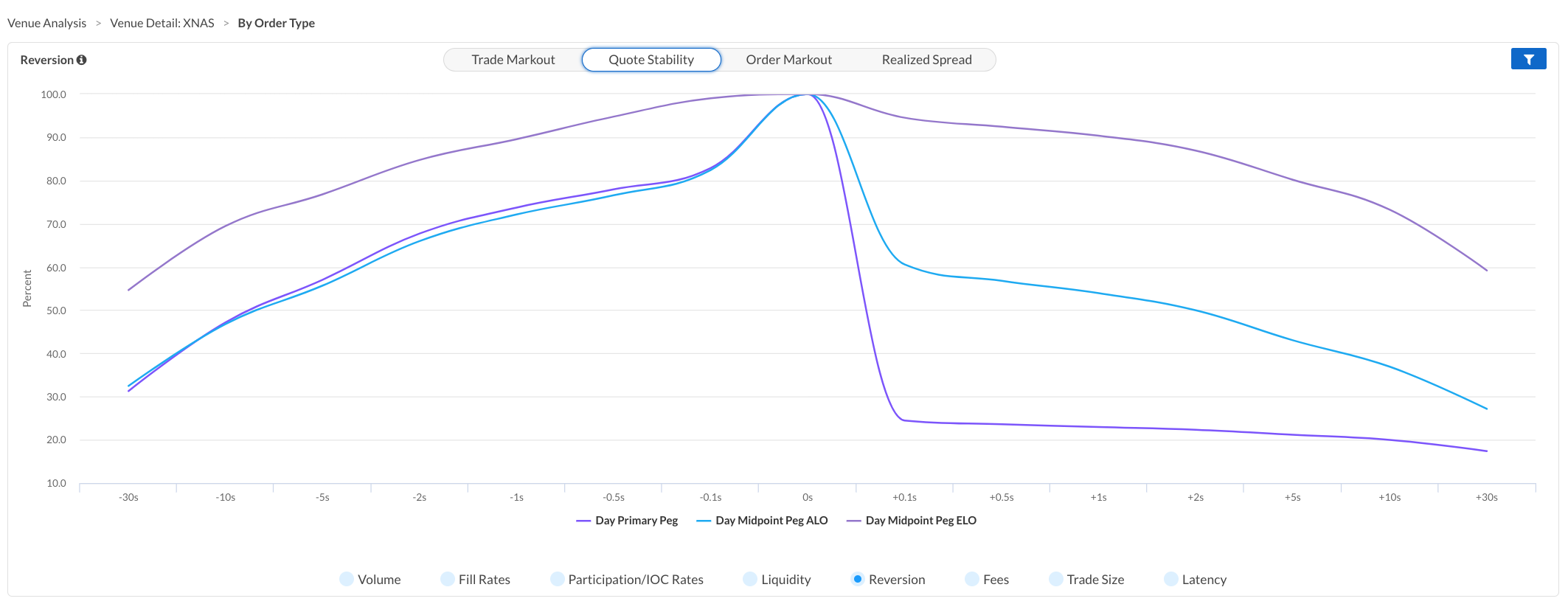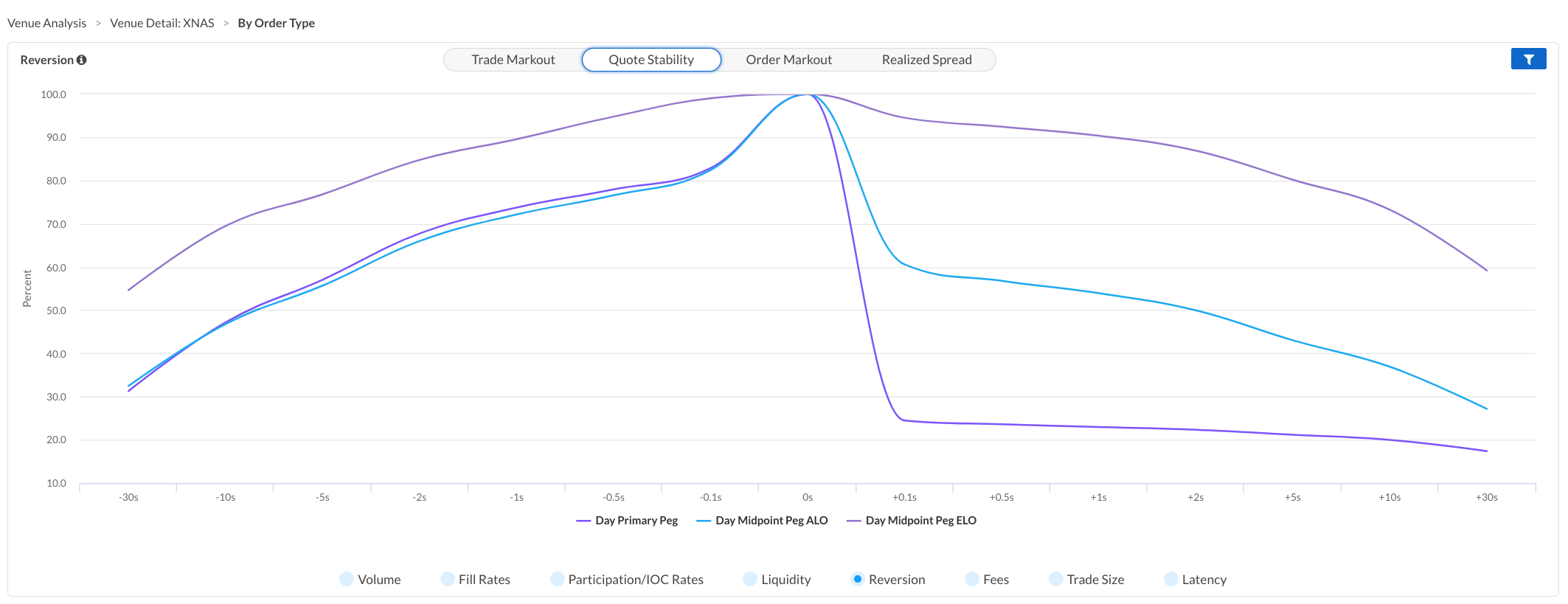M-ELO, Nasdaq’s Midpoint Extended Life Order, is a new order type that is designed to attract longer term investors to interact with each other by trading against other M-ELO orders at the midpoint of the NBBO.
M-ELO is a non-displayed order type designed to reduce information leakage and provide the best execution possible at the midpoint of the NBBO. There is a ½ second holding period before a M-ELO order can be executed. This resting period protects M-ELO orders from negative price impact as the market moves therefore mitigating adverse selection concerns.
Using Clearpool’s Venue Analysis, we analyzed May 2018 performance of three Nasdaq passive order types: Day Midpoint Peg ALO (Midpoint-Peg), Day Midpoint Peg ELO (M-ELO), and Day Primary Peg (Primary-Peg).
- Both Midpoint-Peg and M-ELO are hidden order types, whereas Primary-Peg is a displayed order type.
- Primary-Peg adjusts its price in response to changes in the near-side of the NBBO, and Midpoint-Peg and M-ELO adjust their price in response to changes in the mid-point of the NBBO.
Reversion Results: Quote Stability
Quote Stability measures the percentage of trades (or executions) where the NBBO mid-point did not change in time intervals up to 30 seconds before and after execution.
M-ELO is designed to reduce adverse selection, so we analyzed reversion as it relates to quote stability post-execution. M-ELO trades appear to occur when the NBBO is significantly more stable than Midpoint-Peg and Primary-Peg trades.

Post-execution (after 0 seconds), there was significant drop-off in quote stability for Midpoint-Peg and Primary-Peg as compared to M-ELO.
+0.1sec after execution, 94.5% of M-ELO trades executed at the same NBBO as 0s, whereas only 60.6% Midpoint-Peg and 24.5% of Primary-Peg trades were executed at the same NBBO as 0s.
The price stability around M-ELO executions makes it a decent option for midpoint liquidity when the intent of the trade is to capture high-quality, midpoint liquidity during stable market conditions and the urgency of execution is low.
Clearpool’s Venue Analysis
Knowing how order types perform in a given venue and utilizing algorithms that both dynamically adapt to where liquidity is and can opportunistically maximize liquidity allows for more informed routing decisions and better performance analysis.
Want a demo of Venue Analysis? Click here.
